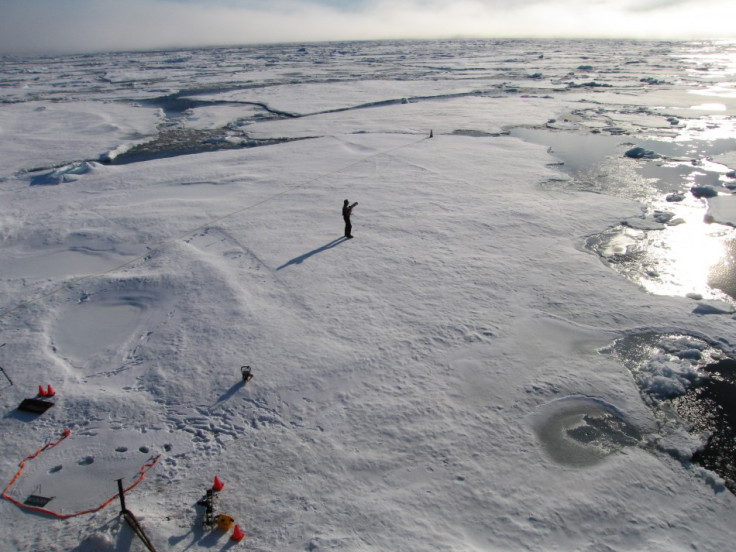Why do Ice Ages occur every 100,000 years? Oceans' breathing may be to blame
Scientists have new hypothesis about why ice sheets advance and retreat on a 100,000-year time scale.

Scientists have found new clues about why Ice Ages on Earth occur at regular intervals, roughly every 100,000 years. Carbon dioxide and the quantity that is sucked in by oceans play a crucial role in this phenomenon, they say.
Over the past 2.6 million years, the Earth has gone through a number of Ice Ages, with the most recent glacial period ending about 11,500 years ago. Before the "Mid-Pleistocene Transition" about a million years ago, the planet used to move in out of Ice Ages every 40,000 years but this interval increased to 100,000 years from then on. Ice sheets became larger and persisted for longer.
While the causes of Ice Ages are not completely understood, scientists generally tie them to changes in the atmosphere, in the position of our planet around the Sun, and changes in ocean currents.
However, they remain uncertain of why the length of the Ice Age cycles changed. The study published in the journal Geology has come up with evidence that oceans may be responsible for this change.
Studying the ocean floor
The scientists analysed data from the Deep Sea Drilling Project, an international scientific ocean drilling programme which retrieved core samples from the deep ocean floor. They report on the chemical make-up of fossils found on the ocean floor
They have found out that there was more carbon dioxide (CO2) stored in the deep ocean during the Ice Age periods which had occurred at 100,000 year intervals. The researchers explain extra CO2 was probably pulled from the atmosphere and into the oceans at these times, establishing the necessary conditions for a prolonged glacial period by lowering the planet's temperature.
This means that ice sheets are larger and the Earth colder when the oceans have inhaled carbon dioxide from the atmosphere. In contrast, when the ice sheets are small, the oceans have exhaled carbon dioxide, and the planet warms. It is possible that the change in size of the ice sheets then affected the frequency of the ice ages, with the larger ice sheets lasting for longer.
A 'positive feedback'
However, it is still not clear what causes the oceans to suck in more CO2 every 100,000 years rather than every 40,000 years. One of the scientists' hypothesis is that from the Mid-Pleistocene Transition, vast amounts of ice were present at the surface of the oceans during glacial periods, and this stopped the water from releasing CO2 in the atmosphere – thus prolonging Ice Ages.
It is a form of vicious cycle, known in climate science as a "positive feedback", by which ice stops the oceans from releasing more carbon dioxide and the planet from warming up, thus creating more ice.
Lead author of the study Prof Carrie Lear, from Cardiff University, told IBTimes UK: "There is a positive feedback in the climate system which would explain why Earth remained in an Ice Age for longer, but we still do not know what causes it. Here we learn that CO2 was important in tipping the 40,000 cycles in 100,000 years cycles but it will be important to understand the causes of the positive feedback. We can't make good predictions of future climate if we don't understand all these complex processes –our study sheds a light on some of these processes."
© Copyright IBTimes 2025. All rights reserved.






















